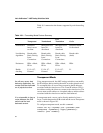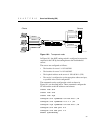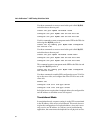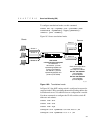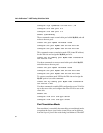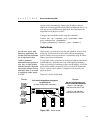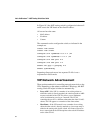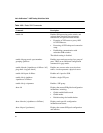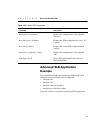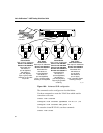
358
Intel
®
NetStructure™ 480T Routing Switch User Guide
Ratio
If you are working with servers that differ significantly in
processing speed and memory, you may want to switch to the ratio
load balancing method. In ratio, the 480T routing switch distributes
connections among devices according to ratio weights that you set,
where the number of connections that each device receives over
time is proportionate to the ratio weight.
For example, if your array contained one new, high-speed server
and two older servers, you could set the ratio so that the high-speed
server receives twice as many connections as either of the two older
servers.
To configure ratio, use this command:
configure slb pool <poolname> lb-method ratio
Ratio Weight
The ratio weight is the proportion of total connections that the node
address should receive. The default ratio weight for a given node
address is 1. If all node addresses use this default weight, the
connections are distributed equally among the nodes. A ratio weight
of 2 would result in twice as much traffic as a ratio weight of 1.
To configure a ratio weight, use this command:
configure slb pool <poolname> add
<ipaddress>:<L4Port> ratio {<ratio>}
Least Connections
The least connections method is considered relatively simple in that
the switch passes a new connection to the node having the least
number of active sessions. The number of active sessions includes
only those sessions occurring within the same VIP (virtual IP
address). Least connections works best in environments where the
servers or other equipment you are load balancing have similar
capabilities.
To configure least connections, use this command:
configure slb pool <poolname> lb-method least-
connections



